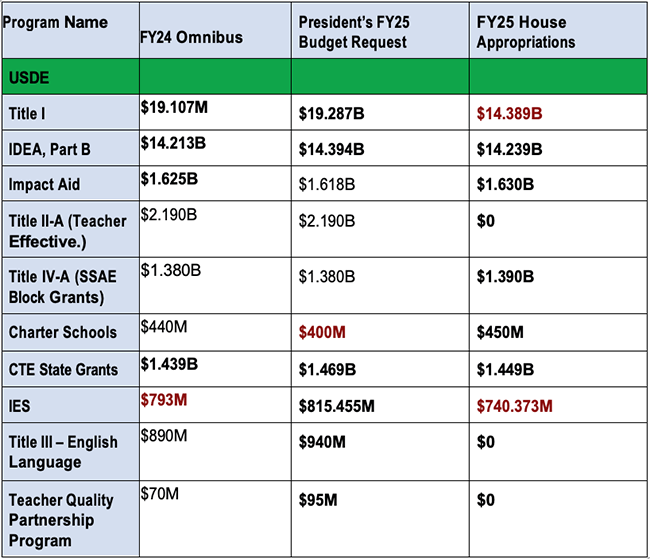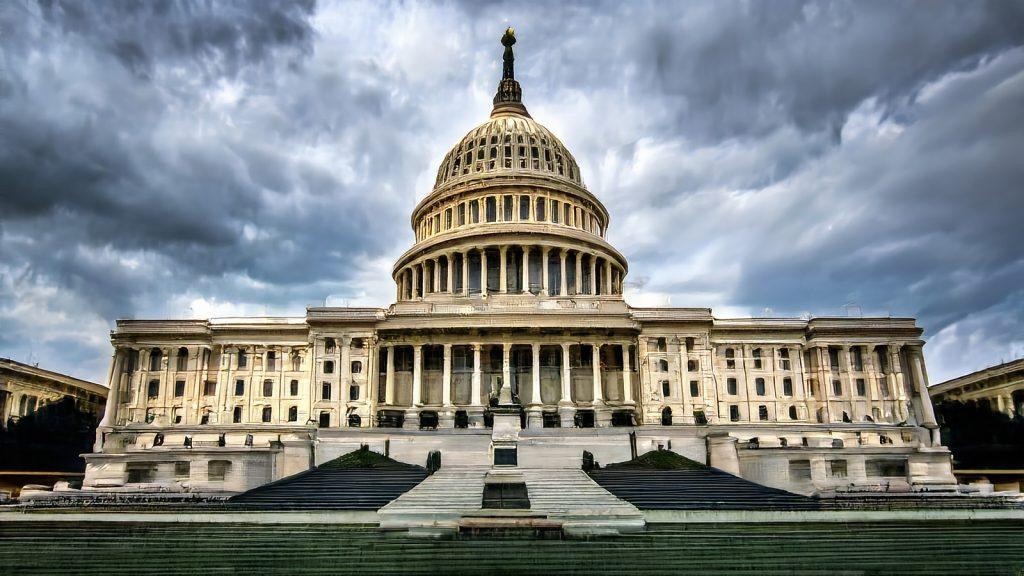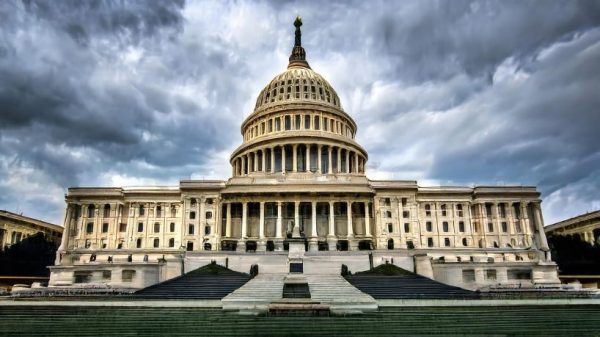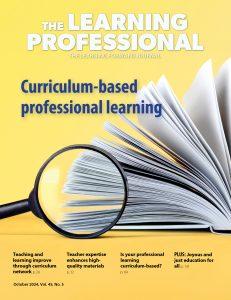Today, the House Appropriations Committee unveiled the legislative report for its fiscal year 2025 Labor HHS Education bill, which it will mark-up on July 10 (Update: The committee voted 31-25 to approve the appropriations bill on July 10.) Overall, the report details how the House Appropriations Committee plans to slash approximately $11.1 billion from the Department of Education’s budget, identifying the 17 programs that would be eliminated and other deep cuts should it become law. It also shows how other major programs, like Title IV-A, IDEA, Career and Technical Education and Impact Aid, would remain protected and actually receive small increases in this bill. The House will attempt to pass this bill on the House floor in late July. The Senate has not yet introduced its own version of this bill but that also is expected later this month. The largest K-12 cuts in the House’s FY25 Labor HHS Education bill come from cutting $3.78 billion from Title I, Part A; eliminating entirely the $2.19 billion Title II-A, the Supporting Effective Instruction State Grants program; and deleting the $890 million Title III, English Language acquisition program. Other smaller but important K-12 programs eliminations revealed by the report include:
- State Assessments ($380 million)
- Promise Neighborhoods ($91 million)
- American History and Civics National Activities ($20 million)
- Teacher and School Leader Incentive Grants ($60 million)
- Supporting Effective Educator Development (SEED) ($90 million)
- Arts in Education ($36 million)
- Javits Gifted and Talented ($16.5 million)
- Statewide Family Engagement Centers ($20 million)
In higher education, the report shows that the bill would eliminate the $70 million Teacher Quality Partnerships program and cut $4.133 million from the Higher Education Act’s Title VI International Programs section. The Institute for Education Sciences, which conducts education research, would see a nearly $53 million cut.
By far and away the most devastating cut is the proposed eliminations of Title II-A. The House report provides a troubling rationale for this elimination:
“This funding has not been shown to improve teacher quality or advance student achievement. Additionally, the Committee notes that according to the Department’s August 2023 report (‘‘State and District Use of Title II, Part A Funds in 2021–2022’’), professional development was the most popular use of Title II-A funds among school districts. Seventy five percent of districts reported funding professional development for teachers, and 56 percent of districts reported funding professional development for principals and other school leaders. Among districts that invested Title II-A funds in teacher professional development, 78 percent funded topics related to ‘‘content knowledge.’’ The Committee is concerned that school districts are using these Federal funds to train teachers in divisive ideologies.”
In addition to trying to defund Title II-A, the Committee demands – perhaps in an effort to crack down on the alleged “divisive ideologies” training noted above – that all school districts that have received Title II-A funding provide “a report that lists any use of this funding for the most recent year data is available, by schools or school districts to pay outside consultants or firms for the purposes of teacher and/or school leader training or professional development. The report shall include the specific names of any applicable consultants or firms who were paid using Title II-A funds and where possible a description of the training or other materials provided.”
Below is a breakdown of key K-12 program funding levels:







